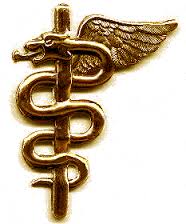
The South African Military Health Service is the branch of the South African National Defence Force responsible for medical facilities and the training and deployment of all medical personnel within the force. Though unusual, as most national militaries integrate their medical structures into their existing service branches, the SANDF regards this structure as being the most efficient method of providing care and support to the SANDF's personnel.

A combat medic, or healthcare specialist, is responsible for providing emergency medical treatment at a point of wounding in a combat or training environment, as well as primary care and health protection and evacuation from a point of injury or illness. Additionally, medics may also be responsible for the creation, oversight, and execution of long-term patient care plans in consultation with or in the absence of a readily-available physician or advanced practice provider. Combat medics may be used in hospitals and clinics, where they have the opportunity to work in additional roles such as operating medical and laboratory equipment and performing and assisting with procedures.
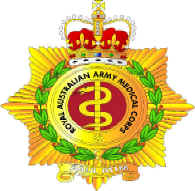
The Royal Australian Army Medical Corps (RAAMC) is the branch of the Australian Army responsible for providing medical care to Army personnel. The AAMC was formed in 1902 through the amalgamation of medical units of the various Australian colonies and was first deployed to South Africa as a small detachment of personnel supporting the Australian Commonwealth Horse during the Second Boer War. The corps has participated in every Australian Army operation since then, including wars and peacekeeping operations. The "Royal" prefix was granted in 1948.
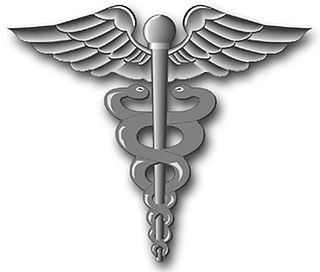
A hospital corpsman is an enlisted medical specialist of the United States Navy, who may also serve in a U.S. Marine Corps unit. The corresponding rating within the United States Coast Guard is health services technician (HS).

The Medical Assistant is a Royal Navy medical rating in the United Kingdom. Medical Assistants serve on all types of ships in the surface fleet, submarine fleet, Royal Marines, Fleet Air Arm or ashore in a sick bay, hospitals, or other establishment. The equivalent rate in the United States Navy (USN) is hospital corpsman.
In the United States Army and Marine Corps, a battalion aid station is a medical section within a battalion's support company. As such, it is the forwardmost medically staffed treatment location.
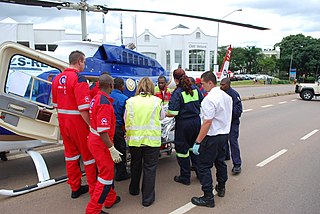
Emergency medical services in South Africa are a public/private system aimed at the provision of emergency ambulance service, including emergency care and transportation to hospital.

The Defence Chemical, Biological, Radiological and Nuclear Centre is a United Kingdom military facility at Winterbourne Gunner in Wiltshire, south of Porton Down and about 4 miles (6 km) northeast of Salisbury. It is a tri-service location, with the Army being the lead service. The centre is responsible for all training issues relating to chemical, biological, radiological and nuclear (CBRN) defence and warfare for the UK's armed forces.
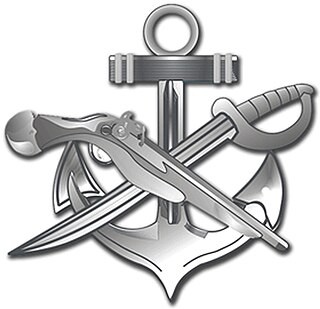
The Special Warfare Combatant-craft Crewmen is a United States Naval Special Warfare Command team that operates and maintains small craft for special operations missions, particularly those in support of the U.S. Navy SEALs.

A Special Amphibious Reconnaissance Corpsman (SARC) is a United States Navy hospital corpsman who provides MARSOC and other USSOCOM units advanced trauma management associated with combatant diving and parachute entry. Traditionally, they are attached to the Marine Corps Force Reconnaissance companies to help support the Command Element of the Marine Air-Ground Task Force in special reconnaissance missions.

7 Medical Battalion Group is the specialist Airborne Medical Unit of the South African Military Health Service. The Battalion's main task is to render medical support to the South African Airborne and Special Forces.

The Mfezi is an armoured ambulance used by the South African Military Health Service. The name Mfezi is a Zulu word that means cobra. The snake is the emblem of the South African Operational Medical Orderly who operate and use these vehicles, therefore armoured ambulances are named for snakes in South African military service.
68W is the Military Occupational Specialty (MOS) for the United States Army's Combat Medic. 68Ws are primarily responsible for providing emergency medical treatment at point of wounding on the battlefield, limited primary care, and health protection and evacuation from a point of injury or illness. 68W's hold the license of EMT-B through the NREMT, and often serve the role similar to an EMT-B or Medical Assistant. However, 68Ws often have a scope of practice much wider than EMT-B's and Medical Assistants. This specialty is open to males and females with minimum line scores of 107 GT and 101 ST on the Armed Services Vocational Aptitude Battery (ASVAB).
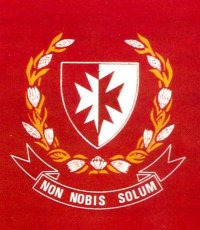
1 Medical Battalion Group is a Medical Battalion in the South African Medical Health Services (SAMHS), part of the South African National Defence Force (SANDF). As a reserve unit, it has a status roughly equivalent to that of a British Army Reserve or United States Army National Guard unit. It is based in the city of Durban in KwaZulu-Natal, South Africa.

The 44 Pathfinder Platoon is part of the 44 Parachute Regiment. The pathfinder is a trained and specialized paratrooper, who performs covertly behind enemy lines, either in small groups or in collaboration with other reconnaissance units.

3 South African Infantry Battalion is the Basic training unit of the South African Army.

6 Medical Battalion Group is a Medical Battalion in the South African Military Health Service (SAMHS). SAMHS is the fourth Arm of Service of the South African National Defence Force (SANDF).
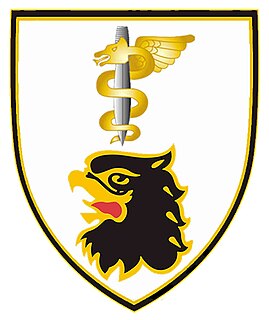
South Africa's 44 Medical Task Group, part of 7 Medical Battalion Group, is permanently attached to 44 Parachute Brigade. The Task Group consists of parachute qualified Ops Medics, specialist soldiers who perform the recovery, stabilization and evacuation of wounded soldiers from behind enemy lines.

12 South African Infantry Battalion was a horse, dog and motorbike assisted infantry unit of the South African Army, which provided horse-mounted infantry and dog handlers to the army for defence purposes.
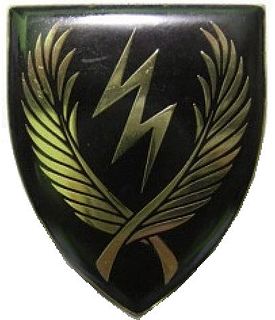
11 South African Infantry Battalion was a motorised infantry unit of the South African Army. Infantry men are soldiers who are specifically trained for the role of fighting on foot, historically this infantry has provided the most among of casualties during war.
